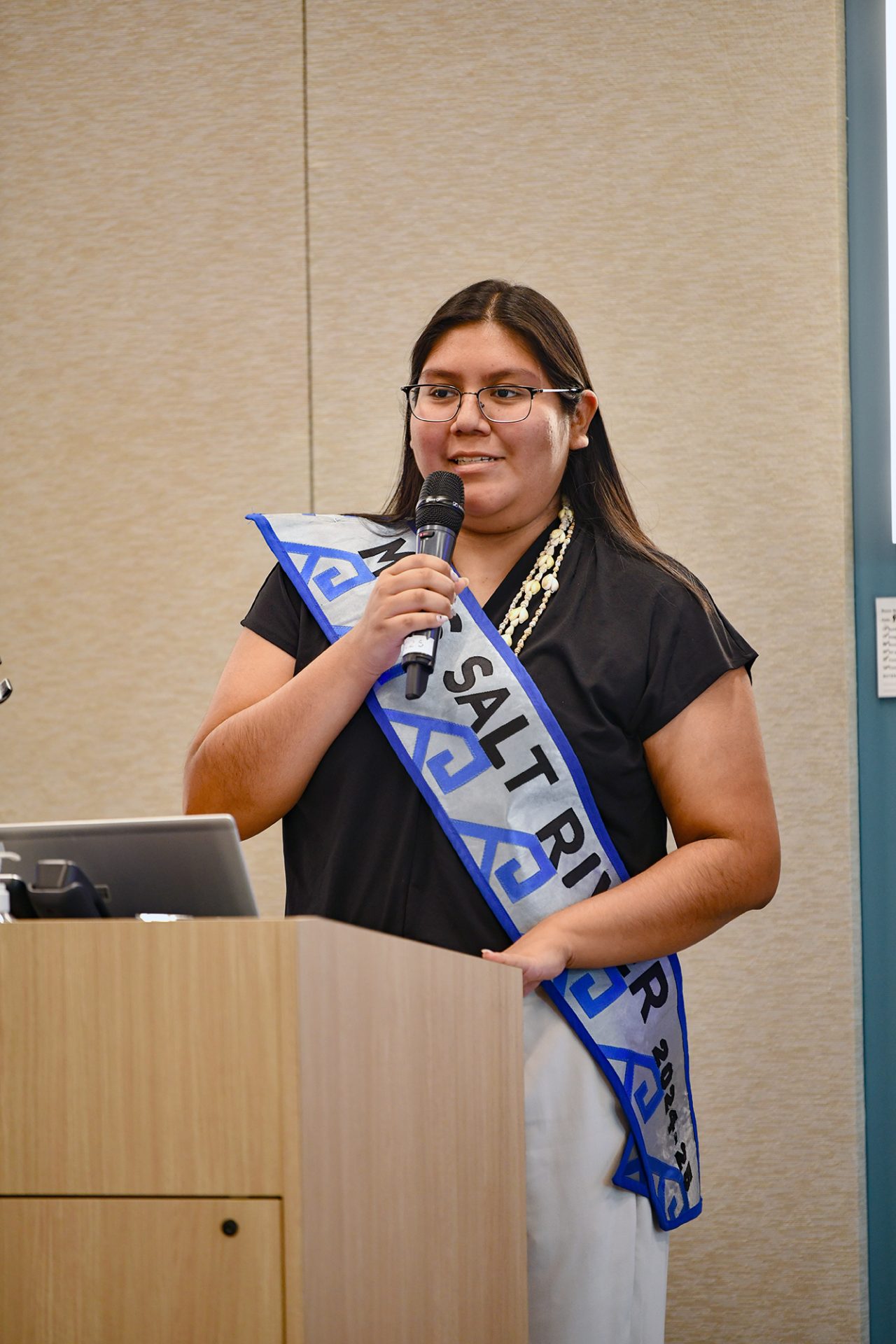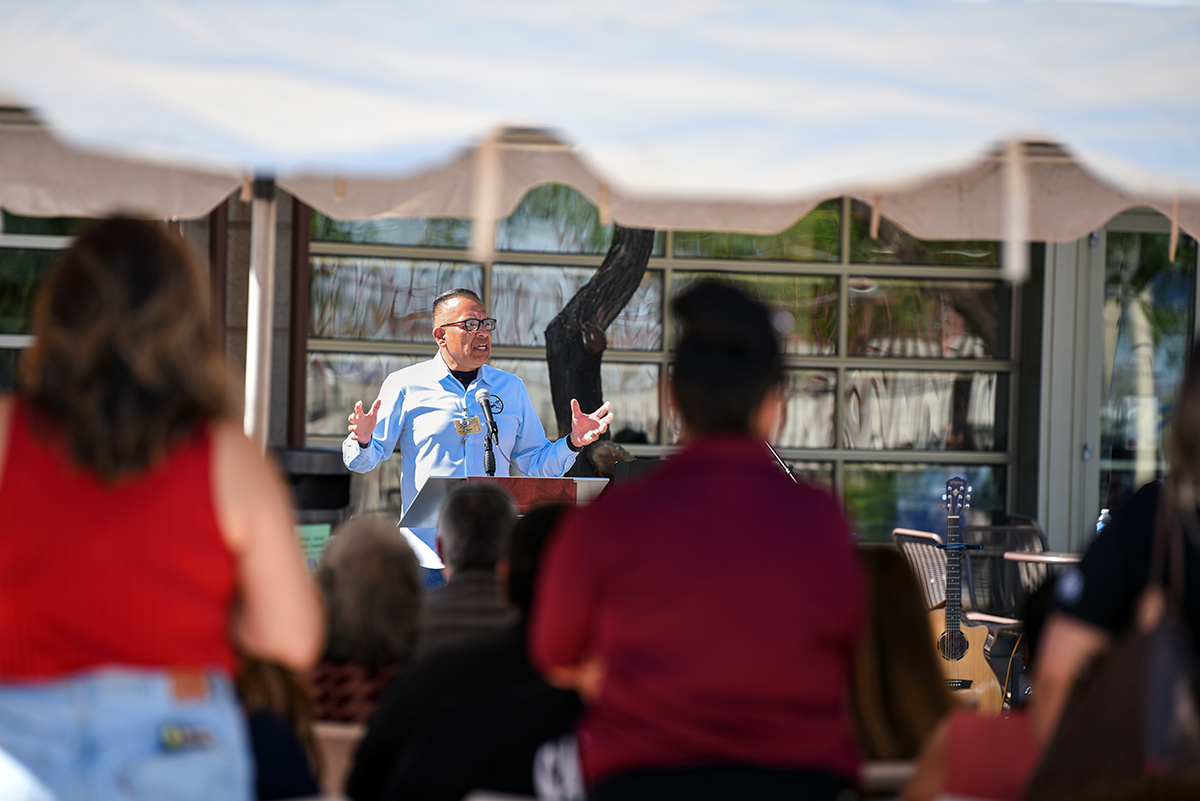VIEWS: 1338
November 13, 2024Young River People’s Council Hosts Youth Empowerment Conference
As part of the continued efforts to empower and motivate the youth of the Salt River Pima-Maricopa Indian Community, on October 9 the Young River People’s Council held a conference about substance abuse prevention inside the Indigenous Cultural Center on the campus of Scottsdale Community College.
With Community students already on their fall break, the youth were invited to attend the conference and enjoy a day’s worth of workshop sessions, outdoor activities, free mini-games and more.
Beginning at 10 a.m., the kids were welcomed by 2024-2025 Miss Salt River Sialik King. A current student at Arizona State University, she thanked the youth for attending the conference during their school break.
“You are the pillars of our Community,” she told the youth. “Substance abuse is an issue in our Community. With you being here today, you’re taking the first important steps to heal our Community.
“But before you can help others, you need to help yourself first,” she continued. “A lot of times when we think about being healthy, we only think about the physical and neglect the spiritual and mental.”
After the welcoming speech, the youth went outside to the SCC Two Waters Garden, where firefighters from the Salt River Fire Department provided strength and conditioning training. In one exercise, the youth were instructed to mimic Salt River firefighters exercises by carrying and unrolling a fire hose.
Out on the campus lawn, the youth participated in a yoga class and a full-body cardio POUND®exercise class, which utilizes Ripstix®, a lightweight exercise drumstick.
Throughout the conference, Miss and Jr. Miss Salt River Royalty participated at each of the workshop stations.
When the sun peeked through the clouds and brought the day’s heat, the youth headed back inside the ICC for lunch and additional workshop classes.
TaShawna Tsosie, senior behavioral health counselor from the River People Health Center, led a class titled “Empowerment Through Substance Awareness: Education, Prevention, and Recovery.”
With nearly a decade of behavioral health experience working with both children and families, Tsosie educated the youth about drug, alcohol and food addiction and how they play a role in our decision-making skills.








She said, “There’s this thing in our heads that helps us figure out ‘Hmm, do I need to change?’ or ‘Do I want to change?’ and all the steps that are involved when we make a choice. Whether it be alcohol, drugs or even food, we all must understand how we make those changes and how it impacts us,” she said.
Registered nurses Colette Winter and Lynesha Armstrong from the River People Health Center provided education regarding the SRPMIC health kiosks, which are located throughout the Community. The kiosks contain free Narcan, COVID-19 tests and more. Winter and Armstrong informed the youth that the health kiosks are not monitored, but they do maintain an inventory of all supplies inside the kiosks. Later, the duo allowed youth ages 13 and older to sign up to be eligible to receive items from the health kiosks.
Shawn P. Yazzie (Navajo/Comanche/Sac & Fox) provided the closing keynote speech to the youth as the conference neared its end. His son, Shawn N. Yazzie, is an award-winning gymnast and is currently attending high school.
During his speech, Yazzie provided the youth with a brief overview of the history between Indigenous tribes and the U.S. government. He asked the youth if they had ever been to the Phoenix Indian School, one of the federal boarding schools for Indigenous youth in the 1800s. Both of Yazzie’s grandparents were taken away from their families by the U.S. government and placed into boarding schools.
Yazzie informed the youth that even having long hair back in those days was outlawed. “I notice a few of us here have long hair,” said Yazzie. “That wasn’t allowed back then. Now my son, he chose to grow his hair out. Guess what? Me and his uncles, we all decided we would do that too.”
He ended his keynote speech by highlighting the fact that each youth’s legacy is still intact and each has the potential to change not only the world, but their Community and families as well. “The opportunity for you kids to open the door for others, that’s what each of you represents. To be able to understand that each of the generations before us laid a path and took steps for the generations after them to succeed. Each one of you has a story. I encourage all of you to learn your clans, figure out where you come from, talk to your elders and get to know who they are.”








